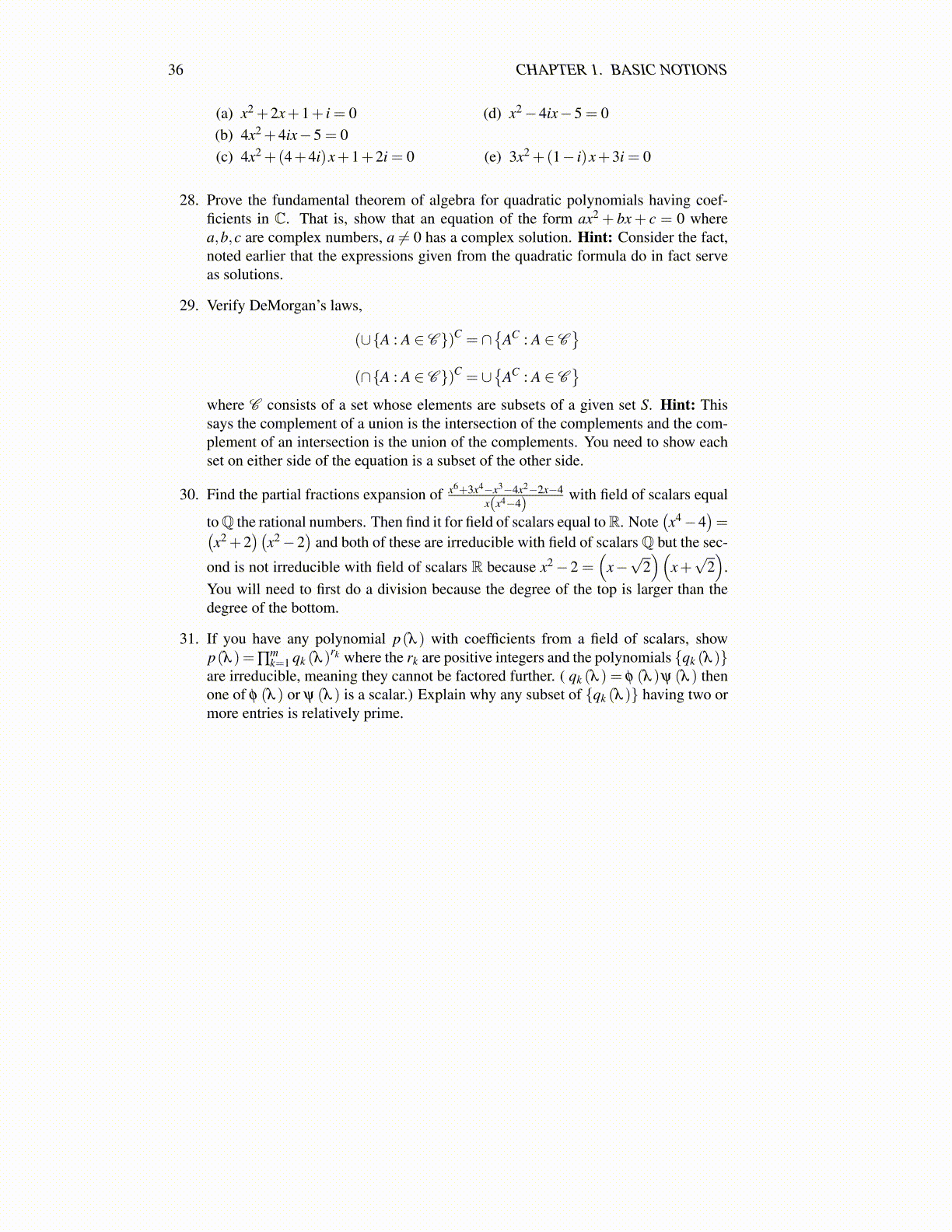
36 CHAPTER 1. BASIC NOTIONS
(a) x2 +2x+1+ i = 0(b) 4x2 +4ix−5 = 0(c) 4x2 +(4+4i)x+1+2i = 0
(d) x2−4ix−5 = 0
(e) 3x2 +(1− i)x+3i = 0
28. Prove the fundamental theorem of algebra for quadratic polynomials having coef-ficients in C. That is, show that an equation of the form ax2 + bx+ c = 0 wherea,b,c are complex numbers, a ̸= 0 has a complex solution. Hint: Consider the fact,noted earlier that the expressions given from the quadratic formula do in fact serveas solutions.
29. Verify DeMorgan’s laws,
(∪{A : A ∈ C })C = ∩{
AC : A ∈ C}
(∩{A : A ∈ C })C = ∪{
AC : A ∈ C}
where C consists of a set whose elements are subsets of a given set S. Hint: Thissays the complement of a union is the intersection of the complements and the com-plement of an intersection is the union of the complements. You need to show eachset on either side of the equation is a subset of the other side.
30. Find the partial fractions expansion of x6+3x4−x3−4x2−2x−4x(x4−4)
with field of scalars equal
toQ the rational numbers. Then find it for field of scalars equal toR. Note(x4−4
)=(
x2 +2)(
x2−2)
and both of these are irreducible with field of scalarsQ but the sec-
ond is not irreducible with field of scalars R because x2−2 =(
x−√
2)(
x+√
2)
.You will need to first do a division because the degree of the top is larger than thedegree of the bottom.
31. If you have any polynomial p(λ ) with coefficients from a field of scalars, showp(λ )=∏
mk=1 qk (λ )
rk where the rk are positive integers and the polynomials {qk (λ )}are irreducible, meaning they cannot be factored further. ( qk (λ ) = φ (λ )ψ (λ ) thenone of φ (λ ) or ψ (λ ) is a scalar.) Explain why any subset of {qk (λ )} having two ormore entries is relatively prime.